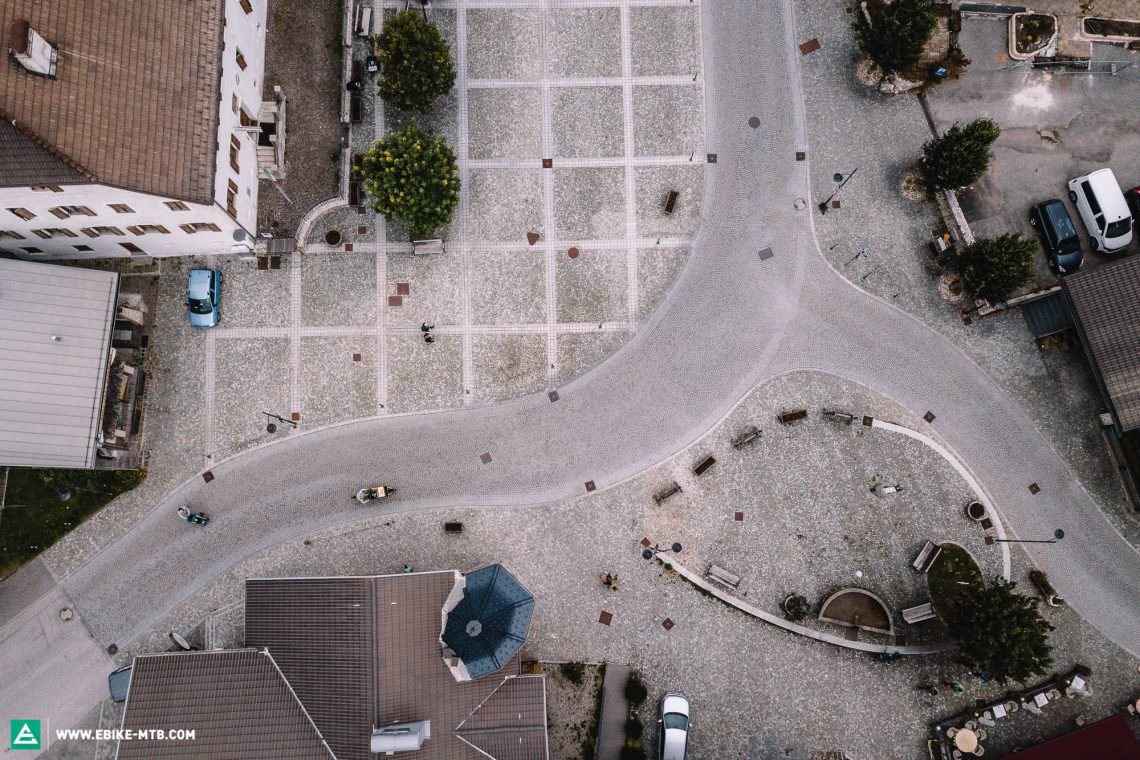Sustainability is one of the megatrends of the 21st century. In this trend article, we show risks and opportunities for the bike and outdoor industry, talk about greenwashing and hoax like products made with ocean plastic, as well as exciting new technologies. In addition, we give impulses in order to help shape a better future now!
- The crux: How is consumption possible with a “good” conscience?
- Being better is not enough – The misconception of the bike world
- The balancing act of the bike industry: Maximum performance or sustainability?
- How new development objectives can advance the bike world, ensure more riding fun and customer satisfaction – and make more money!
- Sustainability needs new business models
- Standards are the new innovation – More durability, repairability, recycling
- Recycling and resource conservation: Circular economy and cradle-to-cradle
- Sustainability has its price

Sustainability is on everyone’s lips. There is hardly a brand that doesn’t like to glam up by saying it is “committed” or “on the way to a better, greener future”. Now isn’t that just swell? Let’s be careful here, though. Hardly any term is more distorted or even misused by politicians, brands and also consumers themselves. Of course, there are also many great initiatives and solutions, but between a lot of greenwashing and window dressing, the truly sustainable solutions are often hardly evident. This may be because they are not very spectacular in terms of communication or the inner workings are too complex to be packaged in a simple message. At the Design & Innovation Award 2022, we had a submission of a fair share of pseudo-green products with snake oil promises, but we also received a number of impressively visionary and sustainable products with concrete added value, which convinced the Award Jury and are set to play an exciting role in the bike and outdoor world in the coming years!
The crux: How is consumption possible with a “good” conscience?
“Made from ocean plastic”, “enhanced recycling” – what some big players are proclaiming sounds like the dream come true for many environmentalists. Equipment, packaging materials and garments made from recycled materials without sacrificing performance, but with the promise that new products can be created and bought without using up new resources. Sounds too good to be true? Well, perhaps that’s because it is! Unfortunately, many brands are currently offering sustainability that does not yet exist in real life. Especially in the fast fashion sector, many brands go one step further and convey that the more products you buy from them, the better it is for the environment. Yet countless scientists and studies have already proven that the use of ocean plastic is little more than a marketing gimmick. Rarely is there more than mere one percent plastic waste from the ocean in these new products because recycling is (still) too cost- and energy-intensive. But still the marketing effort to talk about the use of ocean plastic makes you believe that with your new 100% ocean plastic swag you’re saving wildlife on our planet. Now that counts for some deliberate misleading of the consumer in our books!
Unfortunately, many brands are currently offering sustainability that does not yet exist in real life. Many paradoxical things happen in the greenwashing frenzy of sustainability
But it is not only the fast-moving textile industry that is clever when it comes to using muddled claims to give consumers a good conscience, sometimes even a moral superiority. Many paradoxical things happen in the greenwashing frenzy of sustainability. A tangible example from the automotive sector: relatively new cars that are far from having passed their half-life are scrapped to make way for a “greener” car, often an electric or hybrid vehicle. The additional consumption of resources to produce a new car in the first place and the economic opportunities that arise from scrapping the existing car long before its “end of life” are usually not taken into account. Moreover, these new cars usually come with even more technology and even more features to be smarter, more economical and more environmentally friendly. In reality, however, it is usually more susceptible to faults, more difficult to repair and, due to the complex software and hardware technology, rarely in use for a longer period of time. Especially in the software and connectivity sector, the leaps in development are so great and disruptive that “older” products can no longer be updated after just a few development cycles and correspondingly can only be used to a limited extent.
Of course, a resource-efficiently manufactured product is better than a resource-intensive product. But a recycled product or a newly manufactured, sustainable product is rarely better for the environment than the one you already own. In other words, if you’re looking to be “sustainable”, you have to pay attention to much more than just raw material consumption and materials used.

A holistic approach is important for sustainable success: from manufacturing and production, to transport, packaging, usage behaviour, repairability and product life, all the way to recycling. But most brands are still miles away from this. And so are we as consumers, by the way. Who among us doesn’t like to make a bargain? Many of us buy cheaply and twice as much as we need rather than opt for real quality once and conscientiously maintain, service and care for the products. We cannot change the consumer and throwaway mentality we have been taught over many decades from one day to the next, it is way too deep-seated for that. But we can still change it!
It takes a change in demand from the end consumer, though, which has an impact on the brand’s offerings in the mid- and long- term. Therefore, the best thing we can do most of the time is to use and properly maintain a product for as long as possible – and ideally one we already own! But above all, we shouldn’t let ourselves be lured by cheap offers, low-cost products or expensive green packaging with numerous sustainability promises when we make a purchase. It is much more important to inform ourselves properly about the product and to attach importance to quality, durability and repairability in order to ensure the longest possible life cycle. Even if low prices and promotions seem tempting at first, you – and the environment – usually pay more in the mid-term because you have to keep buying more or carry out expensive repairs due to a shorter life cycle.

Even if it may seem tempting, don’t be blinded by marketing promises. In particular, the CO2 compensation should not hide the fact that resources are actually consumed, especially that in some cases even the provider cannot prove the actual compensation. The good news is that some visionary companies are already working on new manufacturing processes that far surpass current methods technologically, economically and ecologically. But even without innovations and new manufacturing processes, a lot can already be achieved by manufacturers making a paradigm shift in their product developments as well as marketing strategies.
Being better is not enough – The misconception of the bike world
Some CEOs in the bike world are still under the misapprehension that they are sustainable because bikes can replace cars and are therefore better for the environment and climate by their very nature. This also applies to many passionate bikers who swear about the pollution from SUVs, but then turn to their similarly sized trusty vans and drive thousands of kilometres on their biking holidays happily forgetting that their fuel consumption is pretty much the same. Don’t worry: it’s not our intention to hate here, nor do we want to forbid all fun in life. In the end, we’re just as happy shredding trails in Finale Ligure, banging along the epic roads of Majorca on a carbon road bike or taking advantage of a wide variety of mobility options on a city break in Zurich. The point is not to diabolise consumption, but rather to reflect and acknowledge what is simply reality.

For many people, the bicycle in all its facets is not only a means of transport, but above all, a hobby. Both are equally important for people – on the one hand to get to work or to buy groceries, for example, and on the other as a sporting activity for fitness, fun or adventure, and thus also for mental and physical health.

The bicycle plays a central function in society and in the everyday lives of many people. It offers the advantage that its use is very resource-efficient compared to the car, for example. The problem, however, is that many bike products are designed in such a way that wear and tear – here we go with the resource consumption again – is significantly higher than it should be. This applies not only to cheap (e)bikes, but also to the ultimate high-end bikes that are uncompromisingly trimmed for maximum performance. A product purposefully made for racing is as a result not designed for everyday use and probably won’t last as long. Who has a pro mechanic at home to fix their bike every time needed?! The crux of the matter: precisely these products are predominantly present in the marketing of brands because they possess more sex-appeal and desirability, although they might just be a niche product.
The balancing act of the bike industry: Maximum performance or sustainability?
Whether MTBs, eMTBs or road bikes, the development, marketing and sales departments are still fighting for superlatives. For decades, the bike world has been obsessed with performance. Everyone wants to be faster, go higher, further, be lighter, more efficient and lately also provide more fun. But what if the fun quickly comes to an end after a few months – or even days – when a defect ruins your day? What if the € 15,000 road bike starts to creak after a short time because it was designed for maximum performance in races and not for longevity in everyday life? What if the service sucks and the customer has to wait weeks for spare parts or answers from the manufacturer? Is the focus of the bike world too much on the glamour of top performance, marginal gains and a never-ending increase in performance instead of solving the simple problems of the broad mass of “normal” users?

What good is 8.713% performance improvement on the rear suspension if the bearings of the complex linkage are worn out in a matter of months if not weeks? Or if more than 80% of riders cannot take advantage of the full performance because they don’t know how to find the perfect setup? Or position on their bike?? As bikers, we have the luxury and privilege of riding almost the exact same bikes that the top EWS athletes, Tour de France winners, Olympians and World Cup stars use to achieve superhuman feats. There’s a certain level of fascination and sex-appeal to it, but it typically comes with a catch. These bikes and components are usually designed for maximum performance and intensive servicing by professional mechanics rather than maximum reliability and durability. However, most consumers don’t benefit from this top performance in their day-to-day lives, especially when setting the bike up is complex and the components require a lot of maintenance. You alway see bikers riding with the wrong setup on trails and bike park tracks, and, let’s be honest, the recent bike boom hasn’t helped that at all.
How new development objectives can advance the bike world, ensure more riding fun and customer satisfaction – and make more money!
The good news is: there are solutions for more sustainability that we can implement immediately. The self-imposed development and marketing priorities of the manufacturers play a major role here.
Longer product cycles = better amortisation
Up to now, many manufacturers have followed what we know from the fast fashion industry: every new trend has to be taken up and implemented for quick monetary gain. In other words: a new year means new innovations, new “standards” and new models. Short product cycles are still common in the bike industry, even if numerous manufacturers are increasingly trying to say goodbye to the classic model years. Customers, and thus the industry itself, are running in an ever faster turning hamster wheel in search of marginal gains, new colours and the hype of the most blatant shit. It’s obvious that this can’t be sustainable because a lot of consumption means high use of resources. Well, duh!
New focal points in product development
By establishing new development objectives, brands can improve many things in a few years’ time. As soon as repairability, durability and uniform standards become more important than ultimate performance, several direct positive results can be expected: fewer breakdowns, more or longer-lasting riding enjoyment simply because products last longer, and more matching spare parts through limited standards and easier repairability. More durability would also solve the issue of overloaded bike shops and many service problems that manufacturers have to tackle. In the end, this can save a lot of money whilst increasing margins!
The good news is that by only slightly changing our development and communication objectives, we can already make a big difference and make biking more sustainable. What we want to say here is that every single player in the bike industry has the power to initiate change, but they also need consumers to buy the corresponding products instead of lusting after performance superlatives and new models every year. And this is exactly where communication and marketing play an important role.
Sustainability needs new business models
Now it may seem paradoxical that brands should educate their customers to buy fewer products, right? But it is also a fact that customers’ needs and demands are changing – not least due to the electrification of the products and new target groups entering the segment. Many bikers buy the Mercedes and Porsches among the bikes, but expect the servicing costs of a VW Polo! It is obvious that this can’t work in practice and above all cannot do justice to the sophisticated high-end components.

That means, on the one hand, there needs to be more education on the topic of service, its necessity and the costs involved in maintaining high-tech components. On the other hand, brands need to adapt their business models, perhaps similar to the automotive industry, which often earns its money not from car sales but from service and after-sales. So far, service has been the unloved child of the bike industry. Hardly any manufacturer or direct seller is well positioned in this area and dares to charge high-margin prices. Digital services and additional features can also be an exciting path for new business models.
Standards are the new innovation – More durability, repairability, recycling
The development of modern electronic devices seems like a counterexample in terms of sustainability. Whereas in the past it was still possible to replace the battery and individual components of an iPhone or MacBook on your own, nowadays this is hardly possible without voiding the warranty. The same development can be seen in almost all areas from cars to bicycles. The manufacturing process might be made more environmentally friendly, but the maintenance and servicing of a product can rarely be done by the users themselves anymore. The reason is obvious: increasing electrification, a growing number of features as well as special components and their integration make products more and more complex.
A bike’s durability, quality and repairability should be at least as important of a selling point as its performance.
Establishing strong standards is a great and important opportunity for the industry to become more sustainable and also to cope well with the current growth. The durability, quality and repairability of a bike should be at least as important of a selling point as its performance. Manufacturers need to put more focus on ease of replacement, ease of maintenance and additional protection of bikes, such as factory-installed frame protectors, replaceable plastic parts and longer maintenance cycles.

This also includes educating customers more about maintenance and service intervals. After all, the right maintenance not only ensures value retention, but also more longevity, better performance and longer riding fun. It must be more attractive to repair than to buy new – simplification through more standard parts, a better supply of spare parts and easier reparability of products helps here. The possibility of upgrading products, e. g. to get more performance, instead of replacing them completely, also brings advantages. In the case of electronic components, this can be done through digital upgrades of software given that the software and hardware design are planned long-term.

Larger quantities mean that companies that have grown over the years have to reorganise themselves, and more and more corporate groups are also smelling the business. Just like in the automotive field, it is likely that more shared model platforms are created to save development costs and to guarantee service, spare parts supply and margins. And this is a good development, as it can make it easier for the end customer to procure spare parts, ensure simpler reparability and, in the best case, also ensure greater durability.
Recycling and resource conservation: Circular economy and cradle-to-cradle
There are already various concepts for a new and more sustainable economy. Circular economy and cradle-to-cradle are the two most popular approaches. They are based on the principles of nature and can ensure some profound changes in product development and the entire economy in the coming years. At least provided that there is a rethink among the stakeholders: it all starts with the development, the use of the right materials and regenerative energy sources right up to the manufacturing and recycling processes.
The circular economy aims to reduce the use of resources and the production of waste to a minimum by optimising material cycles, while the cradle-to-cradle principle goes one step further and aims to achieve an almost perfect cycle. In other words, the raw materials used to manufacture a product should be reprocessed and reused after successful recycling in order to avoid waste.

Critics see both concepts as overly in-depth processes that are too cost-intensive and not feasible for some industries. Economically, the processing of materials is too expensive and too energy-intensive – with the best example being ocean plastic – so that it makes more sense to manufacture new products with new resources. In addition, this doesn’t reduce overconsumption, as by buying more sustainable products some people are under the misapprehension that they are doing something good for the environment. In reality, however, every purchase means a consumption of resources.
A prerequisite for the implementation of the circular economy is that the raw materials in the bike sector also change and that some products are designed to be smarter and simpler. Alloys – e. g. for aluminium frames or wheels – are problematic because their reprocessing for new high-performance products is almost impossible or does not make sense in terms of energy. Carbon is even more critical because it is currently one thing above all: a hazardous waste!

The good news: the circular economy is not a dream of the future, but something that’s already possible. In the urban sector, for example, the Frankfurt-based company Advanced is initiating a revolution with a composite injection moulding process with which they produce ebike frames from granulate. And the best thing? It takes just 90 seconds! The frame can be shredded into granulate again and thus is completely recyclable. This frame is not only better in terms of economy and ecology, but also from the technical perspective because of the riding dynamics it provides. Its high self-damping qualities ensure high riding stability and a lot of comfort and safety. Through regional sourcing, shorter supply chains, significantly lower production costs, lower CO2 emissions and complete recyclability, Advanced’s approach promises a quantum leap. Whether this technology can be transferred to performance segments like road or mountain biking we’ll hopefully find out soon!

The Swedish equipment and clothing brand POC is also working intensively on this topic and is in the process of launching new products. The Design & Innovation Award team has already been able to test the first units, but we cannot report on this yet, as they have not yet been officially presented.
Surprisingly, most sustainable concepts do not come from nature-related disciplines such as (e-)mountain biking, gravel or road biking, but from the urban segment instead. Perhaps that’s because maximum performance is not in as much of a spotlight there and other criteria are far more significant. We will see whether the innovations are going to be transferred to the more performance-driven segments.
Sustainability has its price
As long as we live, we cannot eliminate resource consumption. Life is too diverse and exciting to prohibit it. Rather, our times demand that we do not continue as before, but find a new balance. In the current sustainability trend, there are sometimes hair-raising marketing campaigns, paradoxical developments and short-term measures that sound oh-so-nice, but as soon as you look under the surface they cannot be surpassed in hypocrisy or futility. The good news, however, is that we don’t have to greenwash anything and by making small changes, we can already achieve great things.
With more conscious consumption as well as our usage behaviour, we as users can support initiatives and companies that get involved. Remember: with every purchase choice you make, you also decide against something else. In order to enable well-informed buying decisions, there’s a need for non-biased media and third parties to fact-check and clarify. And that’s where the Design & Innovation Award can play an important role in the future because it’s at the heart of the latest products and newest trends and has a strong testing process to provide much needed orientation.

Now it’s the turn of the (bike) industry to establish new development objectives, common standards and new recycling methods and to further develop its business models in such a way that potentially lower consumption still remains economically feasible. Because if anything harms the environment, it is excess and overconsumption as we know it from fast fashion, which just makes the hamster wheel spin faster and faster.
Though true sustainability requires a lot from us, it’s like a marathon: the goal seems far away, but until we take the first steps in the right direction, we’ll never get any closer. So let’s get going!
Did you enjoy this article? If so, we would be stoked if you decide to support us with a monthly contribution. By becoming a supporter of E-MOUNTAINBIKE, you will help secure a sustainable future for high-quality cycling journalism. Click here to learn more.
Words: Robin Schmitt Photos: Diverse























